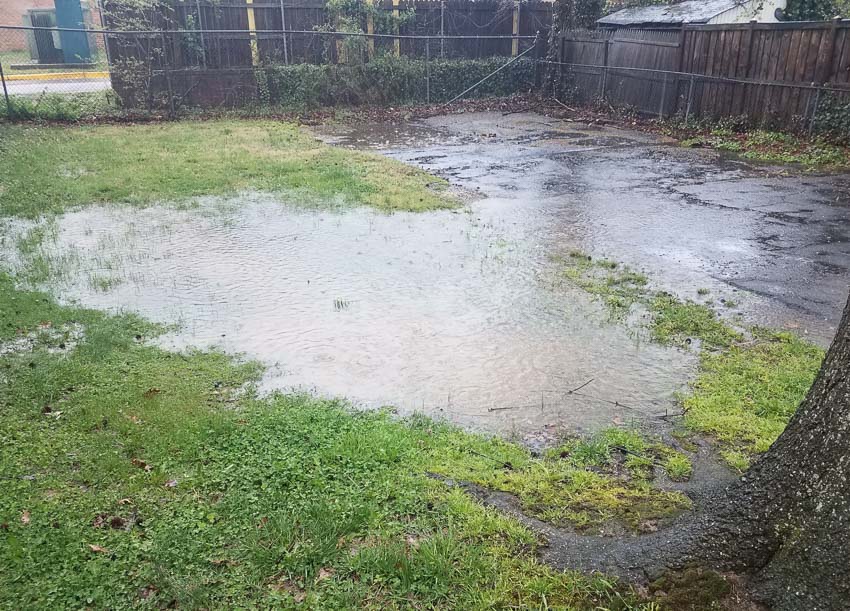Water is the source of all life, but it has some destructive qualities and can spell disaster for your home and yard, even creating problems that affect your family’s health. Learn how to get rid of standing water in problem areas, and discover proven techniques to prevent it from recurring.
What is Standing Water and Why It’s a Problem
Standing water in your yard is water that won’t drain or move. Low spots or soil drainage issues usually cause it, and it can cause various problems. Puddles of water on your lawn, around your home’s foundation, and in your driveway can lead to bigger problems.
Here are some of the reasons why standing water is a problem:
- Causes foundation issues
- Kills your grass
- Attracts pests, including rodents and snakes
- Gives mosquitoes a place to breed
- Leads to mold and mildew problems
- Makes a muddy mess that can get tracked indoors
Identifying Places Where Standing Water Collects
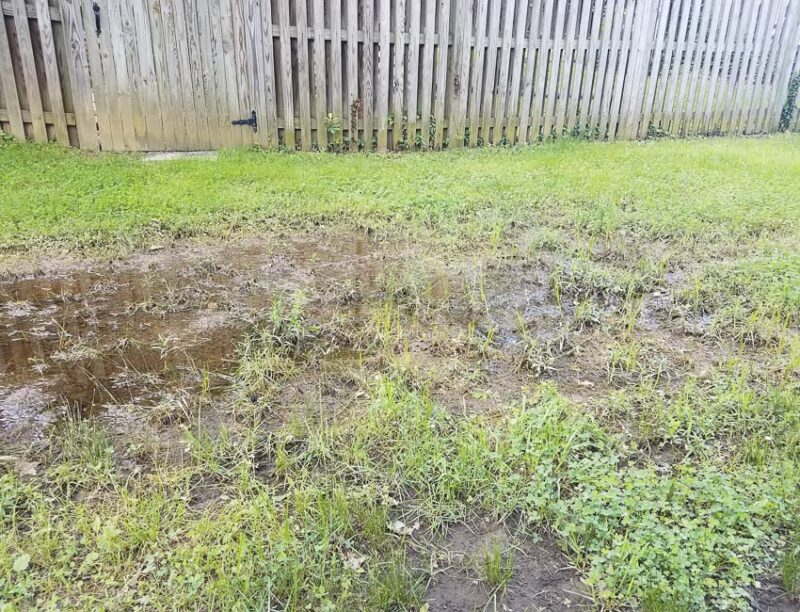
There are several techniques for getting rid of standing water, depending on where the problem occurs. Learn more about the areas in your yard where standing water is most likely to cause trouble.
Problem Area 1: Lawns
Lawns are a common source of standing water. Grass doesn’t like to grow in saturated soils because the water displaces oxygen, which grass needs to thrive.
If the roots of the grass in your lawn are constantly wet, they will smother and die, resulting in patchy lawns.
Poorly drained soils are typically to blame for standing water on lawns, but overwatering, dense thatch, and heavy foot traffic can worsen things.
Installing flagstone paths is a great way to prevent soil compaction, which is a leading cause of soil erosion. You can also improve the drainage of your lawn with dethatching and aeration.
Furthermore, lawns with compacted soil will benefit from aeration at least once a year.
Problem Area 2: Flower Beds
Flower beds are another area where you often have to get rid of standing water. Like grass, many plants don’t like having their “feet” constantly wet.
If your flower bed is a watery mess, it could be due to a number of reasons. Those who plant flower beds around their home’s foundation should use various types of landscape edging to contain dirt and mulch and keep the flower bed separate from the lawn.
Unfortunately, this also keeps water in, and you end up with standing water between your landscape border and your house. This is bad for your foundation and can cause flooding in your basement.
Another reason is that roof gutter systems and downspouts often pour directly into a flower bed. If there’s too much water and nowhere to drain, it will cause problems.
Problem Area 3: Driveways and Walkways
When it rains, drive and walkways don’t absorb water, especially those made of concrete or asphalt. If there are dips or low spots, water collects and has nowhere to go.
It’s particularly important to get rid of standing water on driveways and walkways in cold-climate regions. Standing water invariably leads to potholes as the cycle of freezing, expanding, melting, and freezing again in the cracks destroys your driveway.
Properly sloped driveways and walkways don’t have problems with standing water, but they can lead to standing water issues in other parts of your yard. After heavy rainfall, notice where the water from your driveway goes. If it’s leading to a low spot in your lawn, that could explain the standing water in your grass.
Problem Area 4: Around Foundations
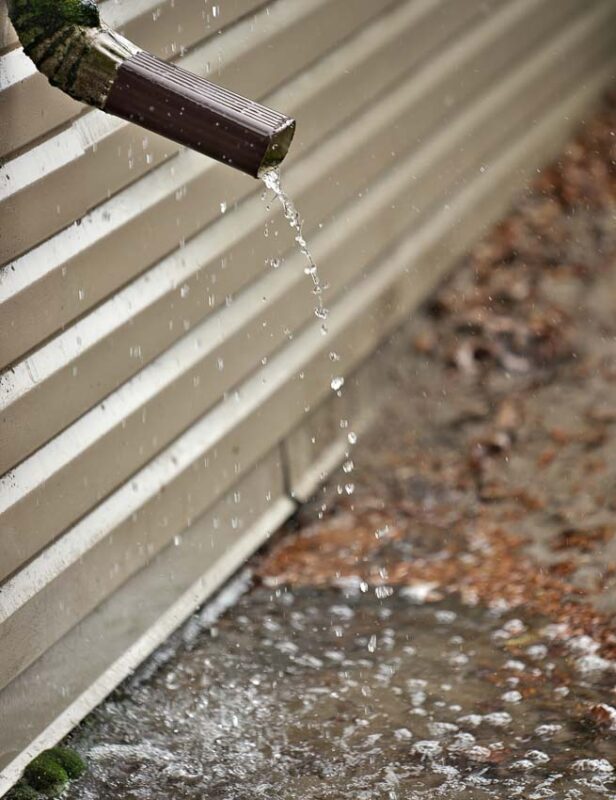
There are several reasons why you need to keep water away from your home’s foundation. If your house was built on poorly drained soil, you could run into serious problems, including the following:
- Flooding basements
- Mold and mildew growth under your home
- Hydrostatic pressure, which builds up against your foundation, leading to cracking, bowing, and shifting
- Soil erosion, which leads to shifting foundations
Poorly drained soils don’t just hold water. The particles in clay soil actually expand, which puts pressure on the walls of your basement or your home’s foundation.
Proven Techniques for Removing Standing Water
There are many ways to get rid of standing water, depending on the type of drainage problem you have. Here are four proven techniques for removing standing water from the problem areas in your yard.
Technique 1: Use of a Sump Pump
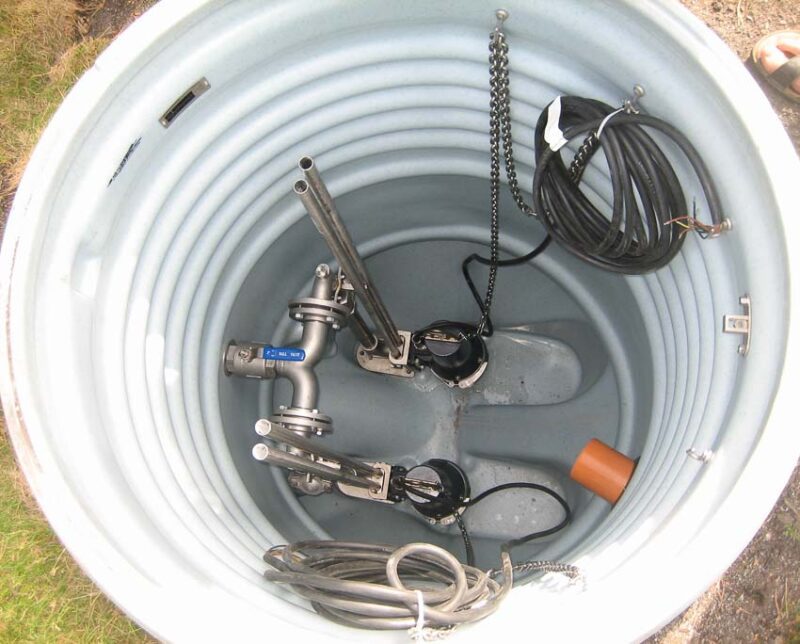
If your backyard floods following a heavy rain event and takes forever to drain, a sump pump can be the solution to your problems. You can use certain pumps to get water out of flooded basements, and there are many types of outdoor sump pumps, as well.
How does an outdoor sump pump work? It works the same way as an indoor sump pump, pumping excess water from one location to another.
People normally install sump pumps in an underground basin made of plastic or metal. The water collects in the basin, and when it reaches a certain point, the sump pump comes on and pumps the water to another location. They have a float switch, so they automatically drain the water away from your home.
Technique 2: Installation of French Drains
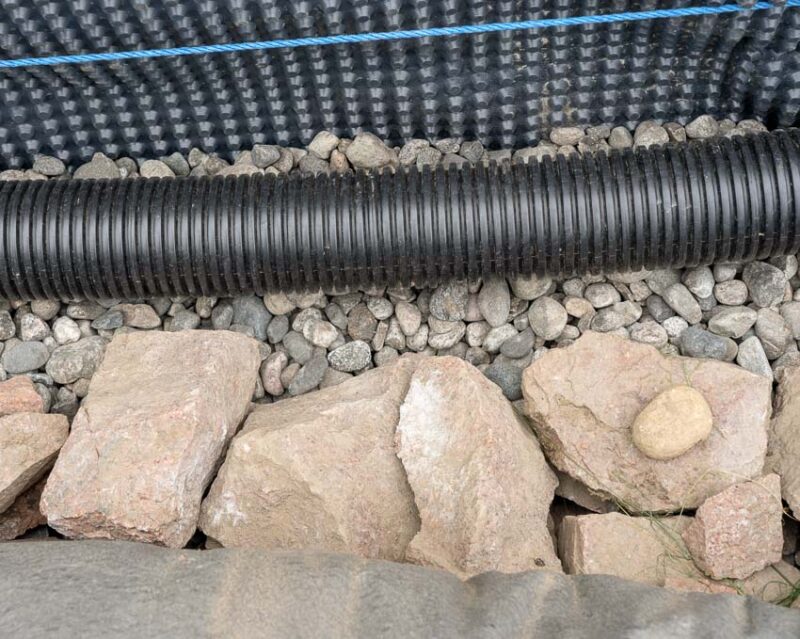
French drains are another way to get rid of standing water. These trenches use gravel, rock, perforated pipe, or a combination of all three to allow water to drain away from areas that aren’t perking by themselves. They aren’t like regular drains because they deal with water that’s already underground.
French drains work by collecting water from problem areas, like your home’s foundation, and allowing it to flow to another area. They are perforated so water can enter the pipe, and they are sloped so that water runs to a low spot underneath the ground.
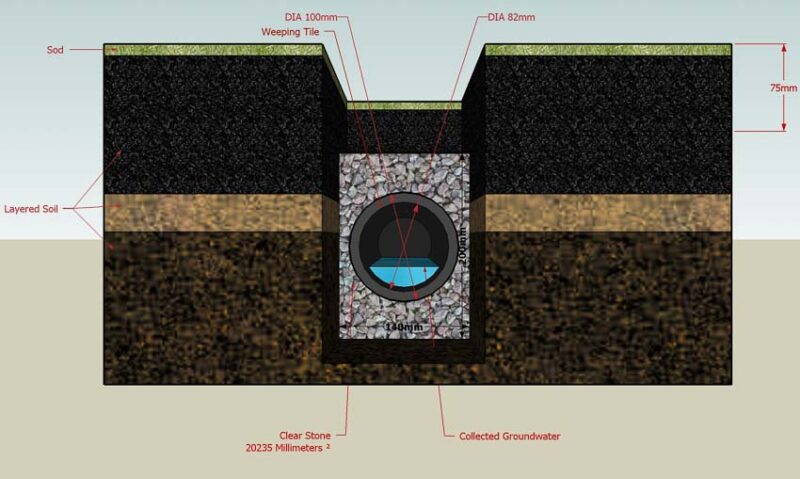
You can connect French drains to underground rain barrels, cisterns, dry wells, dry creek beds, rain gardens, and municipal stormwater systems. Some French drains are wrapped with landscaping fabric, and some come with a prewrapped sock to filter out sediment and keep it from filling up the pipe.
Technique 3: Grading Your Yard
Water seeks low spots, which is why the best way to remove standing water is to grade your yard so that there aren’t any near your house. Unfortunately, this isn’t always possible, especially if your house is built in a low spot.
You should do everything possible to create a positive slope away from your house. A positive slope is where the ground falls at least six inches in the first 10 feet from the foundation.
When the ground slopes away from your home, water is able to move with it. No matter what, when you have drainage problems, you need to start with a positive slope to protect your foundation.
Technique 4: Implementing a Rain Garden
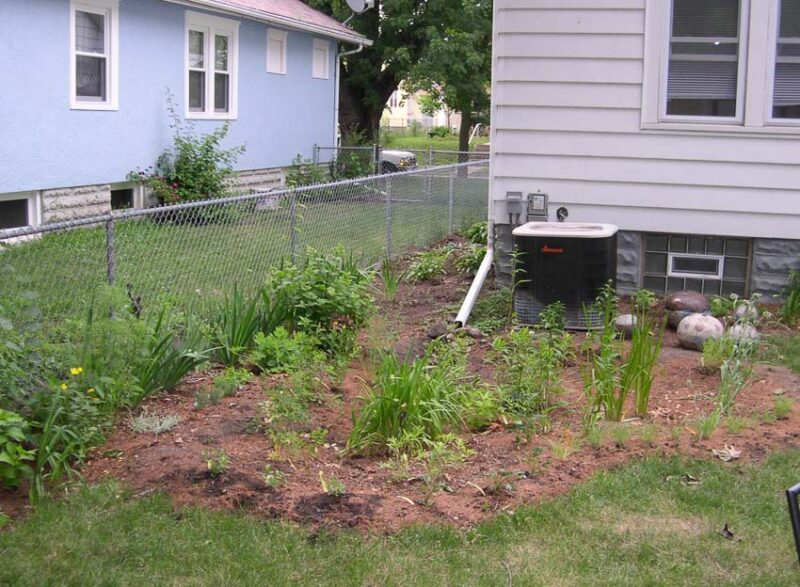
Rain gardens help to get rid of standing water because they are designed to collect runoff and utilize it. The amount of water running off your roof, driveway, and other impervious surfaces amounts to thousands of gallons of water every month.
Rain gardens are designed as low spots, filled with peat soil and plants, where rainwater can collect instead of entering the stormwater drainage system. They reduce the pollution and sediment that water carries into nearby streams, lakes, and rivers.
Lawns aren’t much better at absorbing rainwater than other hard surfaces in your yard. A rain garden can absorb 30% more water than a lawn.
Fill your rain garden with native plants that love moisture but can also handle long periods of drought. There are many exciting plants to choose from, including grasses, sedges, ferns, and cattails.
How to Prevent Standing Water from Recurring
Standing water rarely occurs on sandy soils, but adding sand to heavy clay soils isn’t usually the best answer. Find out what prevents standing water from recurring and improves soil drainage issues.
Improving Soil Quality for Better Drainage
Clay soils drain poorly because of their particle size and shape. Adding organic matter to your soil is the best way to improve drainage and get rid of standing water.
- Add compost to your soil and till it in.
- Use a cover crop as a green mulch.
- Use manure as fertilizer instead of synthetic fertilizers.
- Mulch leaves and grass clippings into your lawn instead of bagging and removing them.
Regular Yard Maintenance Tips
If standing water is an issue for you, there are several maintenance duties that you need to perform each year to help prevent it.
Aeration
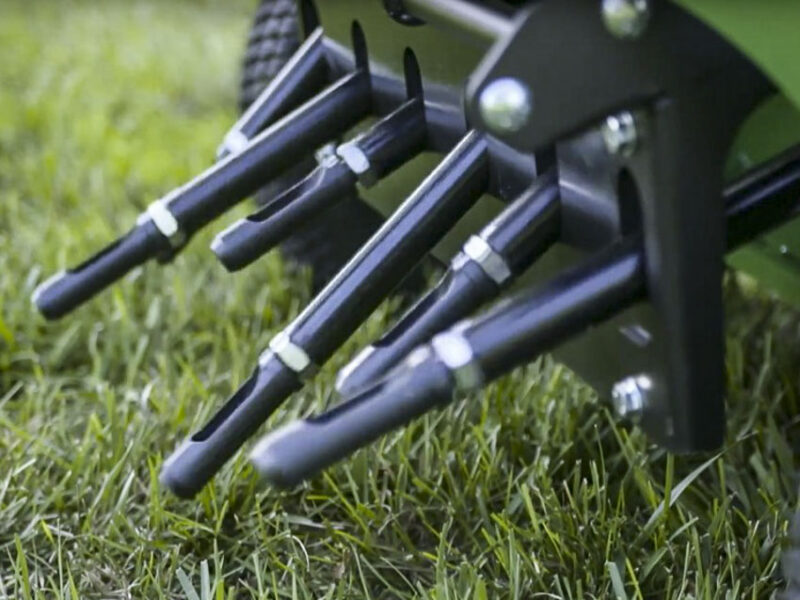
A lawn aerator has metal spikes that perforate your lawn to improve soil drainage and add oxygen to the soil. Heavy clay soils need lawn aeration once per year. You can aerate your lawn yourself or hire a professional to do it.
Dethatching
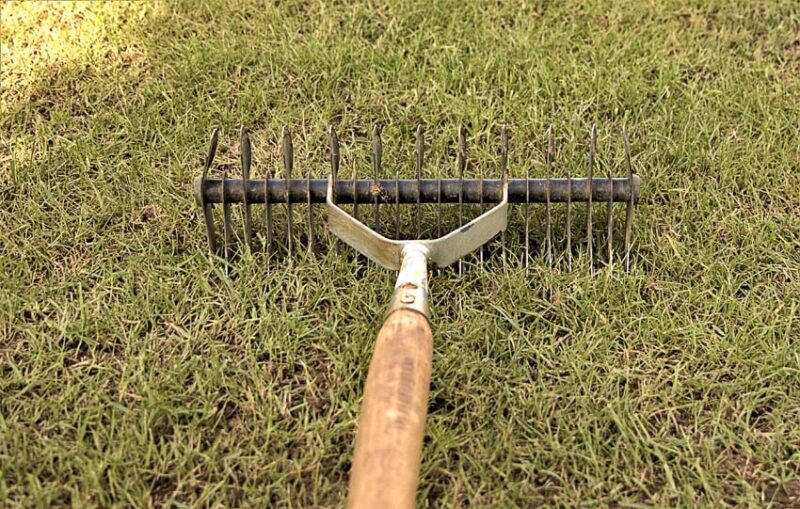
A thick buildup of thatch will prevent water from reaching the roots of your grass. Do a quick thatch test using a shovel to cut out a cross-section on your lawn. If there’s more than a half inch of thatch, it’s time to dethatch your lawn.
Gutter cleaning
Clean and maintain your gutters in the spring and fall to ensure they work properly. Also, ensure that downspouts and extensions are attached, directing water away from your home and driveway.
Proper Landscape Design to Prevent Standing Water
Proper landscaping can help prevent standing water. It’s a long-term solution that requires a significant investment, but it will solve your standing water problems.
Grading
Grading and leveling the area around your home so that water drains where you want it to go is the best long-term solution. When re-grading your landscaping, you can install French drains in problem areas to handle runoff.
Permeable Pavers
If you need to replace a driveway or sidewalk, consider permeable pavers that allow water to drain. They are uniquely designed for drainage in areas like driveways, patios, and sidewalks.
Stormwater Management System
Municipalities worldwide are focusing their stormwater management efforts on keeping rainwater where it falls. Since so much area in populated regions is covered with impervious surfaces, rainwater is a significant problem and overloads stormwater management systems.
You can create your own stormwater management system on your property with a gutter and rain barrel system. It will reduce problems with standing water and help with erosion control.
Wet Tolerant Plants
Plant wet-tolerant species in place of a lawn in areas where standing water is a problem. Plant a rain garden and use the overflow from your rain barrels to keep it watered.
Frequently Asked Questions About How to Get Rid of Standing Water
Why is standing water a problem?

Standing water can kill your lawn and damage the structure of your home. It can also provide breeding areas for mosquitoes and encourage mold and mildew growth. Standing water could also indicate bigger problems, like a water leak.
What is the quickest way to remove standing water?
Installing a rain barrel with an overflow that directs water away from your home is one of the quickest methods to remove standing water. Dethatching and aerating your lawn are also good options.
Can standing water damage my lawn or garden?
If you don’t get rid of standing water, it can damage your lawn and garden. Plants absorb oxygen from the soil through their roots, and it’s just as important to their survival as it is to humans. When soil is waterlogged, the water molecules displace the oxygen in the soil and smother the plants.
How much does professional water removal cost?
The cost of water removal depends on the scope of the project. If you have to pay landscaping professionals, it will cost you about $100 to $300 per hour for their time, equipment, and materials.
What can I do to prevent standing water in my yard?
If you have to get rid of standing water in your yard, it’s because it has nowhere to go. The causes for this can vary, including a high water table or hard pan soils, but the only way to address the issue is to create somewhere for the water to flow.
French drains and water cisterns are effective methods, but at the very least, you need to create a positive slope away from your house to prevent damage to your home’s foundation.

